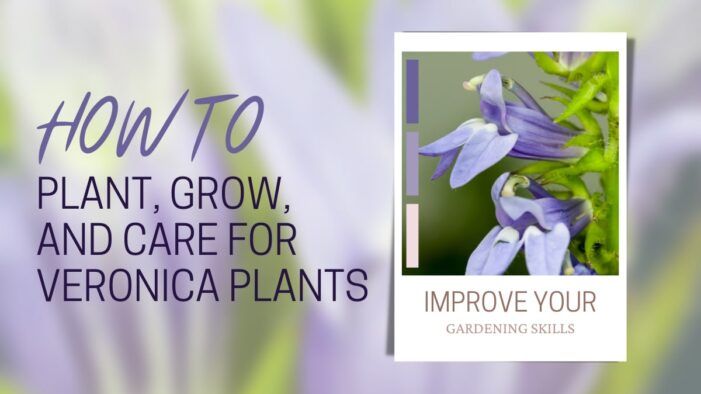Veronica, also known as speedwell, is a perennial plants that graces gardens with spires of flowers from spring through fall. With many sizes and colors available, including various shades of blue, veronica can brighten any full-sun garden while adding interesting texture.
In this article, we’ll give you an overview of veronica, including its features and care tips, so you can decide if it’s the right fit for your garden.
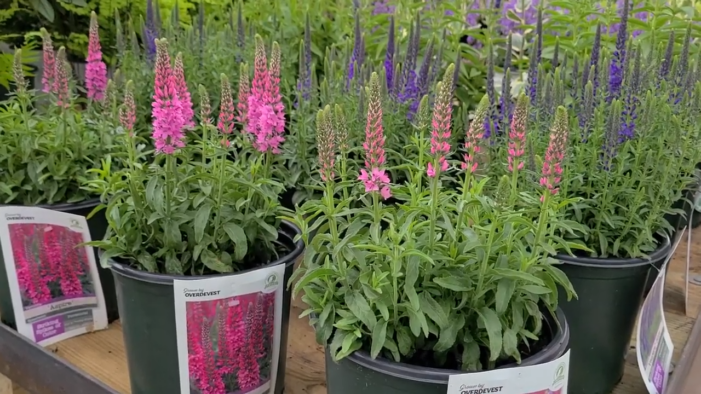
Veronica Overview
| Feature | Details |
|---|---|
| Genus Name | Veronica |
| Common Name | Veronica, Speedwell |
| Plant Type | Perennial |
| Light | Sun |
| Height | 6 to 36 inches |
| Width | 8 to 24 inches |
| Flower Color | Blue, Pink, Purple, White |
| Foliage Color | Blue/Green, Gray/Silver |
| Season Features | Fall Bloom, Spring Bloom, Summer Bloom |
| Special Features | Attracts Birds, Cut Flowers, Good for Containers, Low Maintenance |
| Zones | 3, 4, 5, 6, 7, 8, 9, 10, 11 |
| Propagation | Division, Seed |
| Problem Solvers | Deer Resistant, Drought Tolerant, Groundcover |
Where to Plant
Veronica plants can adapt to various conditions but thrive best in sunny sites with rich, well-draining soil. Some species are suitable for rock gardens, particularly low-growing types that can handle drier conditions. Depending on their height, veronica plants can either serve as groundcovers or additions to garden beds.
How and When to Plant Veronica
In most regions, plant nursery transplants in the spring, or in the autumn for warmer zones. Dig a hole twice the size of the container, loosen the soil, and add compost. Place the plant in the hole with the top of the root ball even with the soil level. Press down on the soil to remove air pockets and water well.
Spacing guidelines for multiple plants depend on the specific variety. Check the tag that came with your plants to ensure proper placement.
Care Tips
Veronica is an easy-to-grow perennial if you meet its needs.
Light: Plant veronica in full sun for optimal results. It will tolerate some shade, but flower production may suffer. Insufficient sun exposure may lead to foliar diseases like powdery mildew and leaf spot.
Soil and Water: Veronica prefers well-drained, loamy soil with ample organic matter. Once established, these plants are drought-tolerant and require little supplemental watering. However, during peak bloom, they appreciate additional water if conditions have been exceptionally dry.
Temperature and Humidity: Veronica grows best in areas with moderate humidity and is cold-hardy in USDA Zones 3-11. In regions with harsh winters, cut the plants back to 2 inches above the ground and add a layer of mulch for protection.
Fertilizer: If planted in fertile soil, veronica doesn’t require regular fertilizer applications. In other environments, fertilize once in the spring with a balanced, all-purpose fertilizer, following the manufacturer’s instructions. Veronica isn’t a heavy feeder.
Pruning: Trim spent blossoms just below the flower base to encourage a second flush. For tall species with branched flowers, avoid cutting too low to preserve the next round of blossoms. As plants mature, consider dividing them, especially mat-forming types that die out in the middle.
Pests and Problems
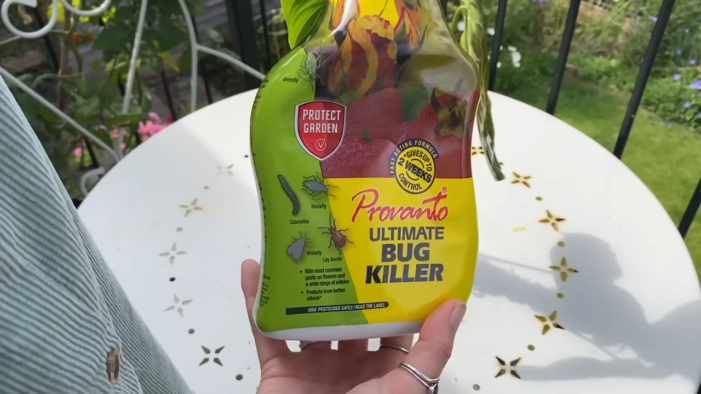
While veronica is generally low-maintenance, it can attract certain pests and encounter some problems.
Aphids and Whiteflies
Aphids and whiteflies are attracted to veronica plants. You can control these pests by spraying the plant with a strong blast of water from a garden hose or applying insecticidal soap or neem oil.
Foliar Diseases
Veronica is susceptible to foliar diseases such as powdery mildew and leaf spot. To prevent these issues, ensure your plants receive adequate sunlight, and avoid overcrowding or overwatering.
Propagation Techniques
To propagate veronica, you can use either division or seed.
Division
Divide mature veronica plants in the spring or fall to create new plants. Carefully dig up the parent plant, keeping the root ball intact. Gently separate the roots and replant the divisions in prepared soil, watering them well.
Seed
You can also propagate veronica by planting seeds. Sow seeds indoors in late winter or early spring, and transplant the seedlings outdoors after the last frost. Alternatively, sow seeds directly in the garden in spring or early summer. Keep the soil consistently moist until germination.
Diverse Veronica Varieties to Brighten Your Garden
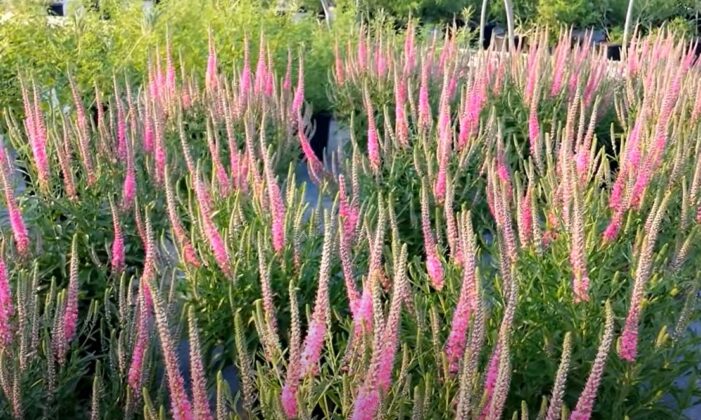
With numerous types of veronica available, you can find the perfect variety to suit your garden’s style and size. In this section, we’ll introduce you to some popular veronica varieties, each with its unique characteristics.
‘Christy’ Veronica’
A low-growing blue variety, ‘Christy’ blooms in late spring and occasionally reblooms throughout the season. This veronica forms a vibrant mat of flowers and thrives in Zones 6-8.
‘Crater Lake Blue’ Veronica’
‘Crater Lake Blue’ boasts deep blue flowers in early summer on plants that grow up to 18 inches tall. Ideal for Zones 6-8, this veronica variety adds a splash of intense color to your garden.
‘Georgia Blue’ Veronica
Characterized by large mats of toothed, purple-tinged foliage, ‘Georgia Blue’ showcases clusters of small, saucer-shaped flowers. Blooming from early spring into summer, these deep blue flowers with white eyes sit atop 12-inch tall plants in Zones 6-8.
‘Giles Van Hees’ Veronica
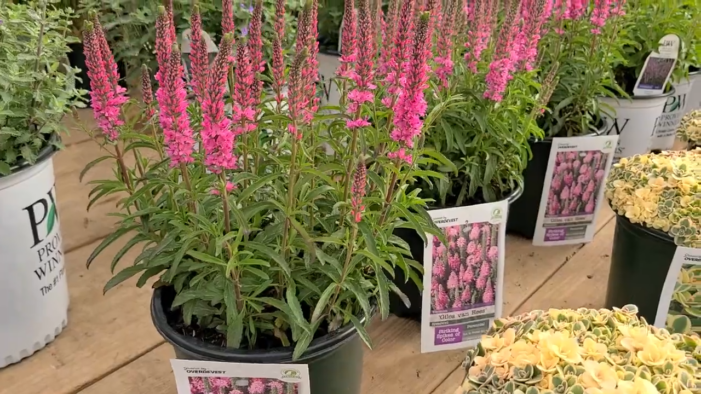
Featuring lance-shaped foliage and dense spikes of bright pink flowers, ‘Giles Van Hees’ blooms in summer and grows up to 6 inches tall. This vibrant variety is well-suited for Zones 4-8.
‘Icicle’ Veronica
A striking Veronica spicata variety, ‘Icicle’ demands attention with its pure white flowers on spikes that reach up to 2 feet tall. This eye-catching veronica thrives in Zones 3-8.
‘Purpleicious’ Veronica
‘Purpleicious’ displays rich lavender-purple flowers throughout summer and into fall. Growing 2 feet tall, this captivating veronica variety flourishes in Zones 4-8.
‘Sunny Border Blue’ Veronica
Living up to its name, ‘Sunny Border Blue’ is an excellent upright veronica choice for sunny gardens. With glossy, dark green crumpled leaves and 7-inch-long spires of violet flowers from early summer onwards, this 2-foot-tall veronica variety is a true showstopper in Zones 4-8.
‘Waterperry Blue’ Veronica
‘Waterperry Blue’ is a charming groundcover variety with sky-blue flowers that bloom in spring. Growing to a height of 6 inches, this sweet veronica variety adds a touch of color to your garden.
With so many veronica varieties to choose from, you can easily find the perfect match for your garden’s design and requirements. These vibrant perennials will not only add color and texture to your outdoor space, but they’ll also bring joy and satisfaction throughout the blooming season.
FAQs
Can veronica grow in partial shade?
Yes, veronica can tolerate partial shade, but it thrives best in full sun. In shadier conditions, flower production might be reduced, and the plant may become more susceptible to foliar diseases such as powdery mildew and leaf spot.
How often should I water my veronica plants?
Once established, veronica plants are drought-tolerant and require little supplemental watering. However, during peak blooming periods, they appreciate some extra water if conditions have been exceptionally dry.
Is veronica deer-resistant?
Yes, veronica is generally deer-resistant, making it a suitable choice for gardens in areas where deer are prevalent.
Can I grow veronica in containers?
Absolutely! Veronica is an excellent plant for container gardens. Ensure your container has proper drainage, and use well-draining, loamy soil mixed with organic matter.
How can I encourage my veronica plants to rebloom?
To encourage reblooming, trim spent blossoms just below the base of the flower. This will help promote a second flush of blooms in many veronica varieties.
When is the best time to propagate veronica plants?
You can propagate veronica by division in the spring or fall, and by seed in late winter or early spring (indoors) or directly in the garden in spring or early summer.
Are veronica plants suitable for rock gardens?
Yes, some low-growing veronica species are well-suited for rock gardens, as they can tolerate dry conditions and form attractive mats of foliage and flowers.
Conclusion
Veronica is a vibrant, versatile perennial that can add color and texture to your garden from spring through fall. By following the planting and care tips outlined in this article, you can ensure your veronica plants thrive and contribute to a beautiful, low-maintenance garden. So go ahead, invite these stunning perennials into your garden, and enjoy their captivating blooms for seasons to come.

